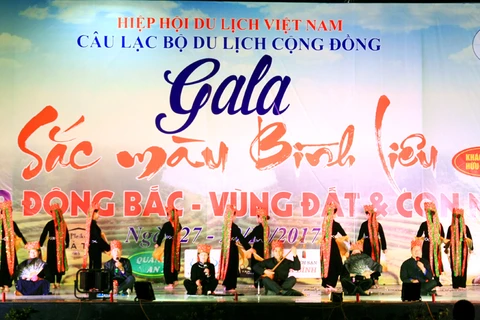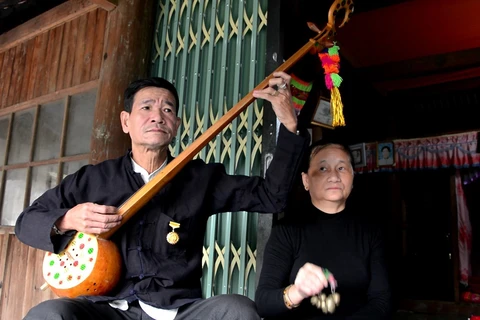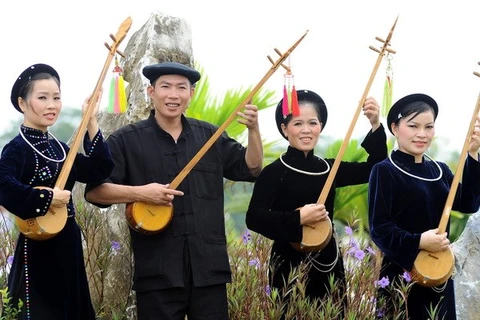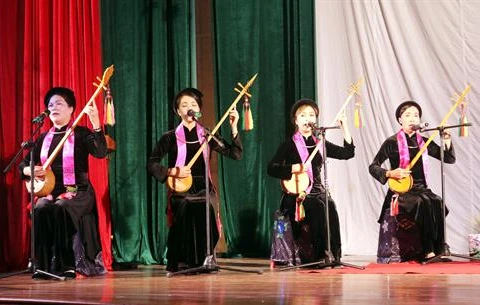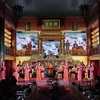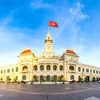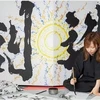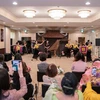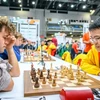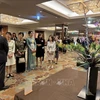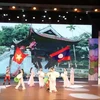Ha Giang (VNA) – The sixth national festival of the art of Then singing and Tinh gourd lute of the Tay, Nung and Thai ethnic groups officially opened in Ha Giang city, the northernmost province of Ha Giang, on May 13.
After the opening ceremony, arts troupes from 14 provinces participating in the festival performed Then singing accompanied by Tinh lute. These performances were deeply imbued with traditional cultural identities of Tay, Nung and Thai ethnics.
The festival from May 12 to 14 gathers more than 500 artisans from the 14 provinces nationwide. It is considered a rendezvous of diverse Then melodies, dances and music from different ethnic regions.
Activities of the event include an exhibition of products from the 14 participating provinces, a display of the Then culture of the Tay, Nung and Thai ethnic groups, Then singing performances, the re-enactment of the traditional Then rituals and the art of Then singing in Ha Giang, and tours of local imposing landscapes.
Nguyen Thi Hai Nhung, Director of the Department of Ethnic Culture under the Ministry of Culture, Sports and Tourism, said the Then of Tay, Nung and Thai ethnics is a special genre of folk spiritual culture created in and connected with people’s daily life, becoming an indispensable part in the spiritual life of the ethnic groups.
Each Then and Tinh melody and dance reflect the aspirations of Tay, Nung and Thai people, and they are precious cultural heritage contributing to the diverse culture of Vietnam, she added.
According to researchers, the word “Then” originates from “Thien”, which means sky or heaven. Therefore, Then singing is regarded as a tune of the Gods.
The most important figures in a Then singing performance are “Ong Then” and “Ba Then” who can sing, dance and play a musical instrument at the same time during rituals while presenting offerings to the Gods, helping the ethnics ask for good health, bumper crops, happiness and longevity.
In 2017, the Ministry of Culture, Sports and Tourism submitted a dossier to UNESCO to seek the recognition of the practice of Then as part of world intangible cultural heritage.-VNA
VNA

